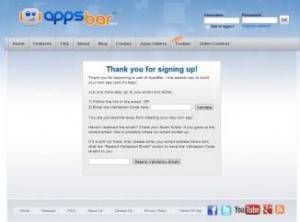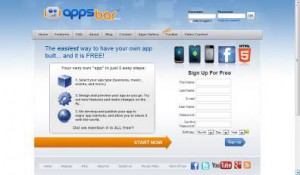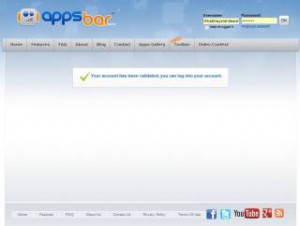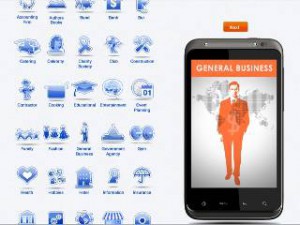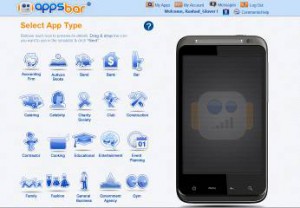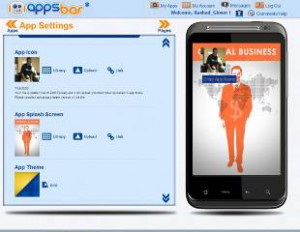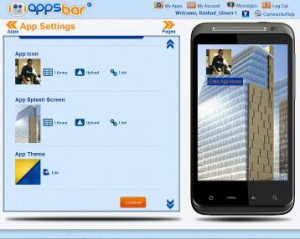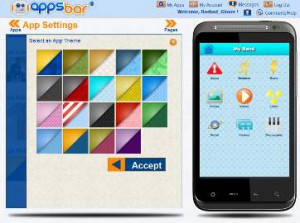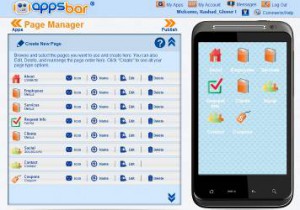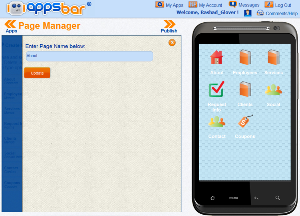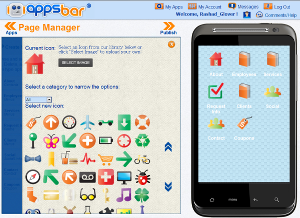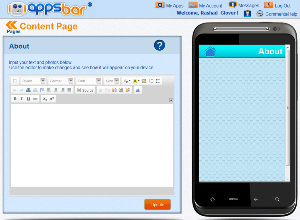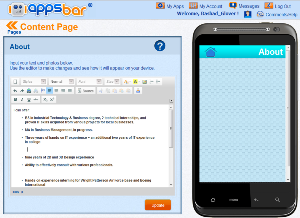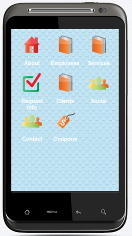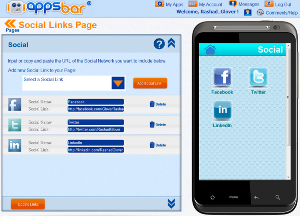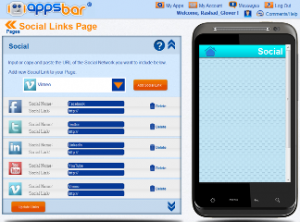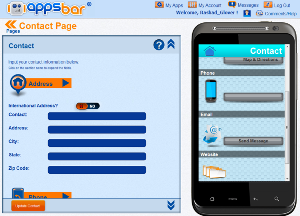These days anybody can make apps to complement their businesses and services. If you have followed along and have taken the steps to create your own website and join all of the websites I asked you two in previous chapters, you will be on your way to having an app in no time. Most of this book was designed to get you to this point. Trust me, you want have your app in their pockets. People throw away business cards, but they rarely delete apps until they need the disk space on their phone, meaning your app will take up real-estate on their phone, for a considerable amount of time.
The goal is to allow people to keep tabs on your business/professional (PROFESSIONAL) social activities. This way your followers feel like they know who you are and have some type of relationship with you. So whatever profession you’re in, if your type of service is needed you’re going to be the first person they think of. How cool is that? So don’t mess up your image. “Guard your image at all cost” as Robert Greene, author of 48 Laws of Power puts it. Keep it professional!
Now go to your web browser and navigate over www.appsbar.com and sign in using your personal information like you did when you signed up for your Gmail account. Once you’re in, you should see a page that says thank you for signing up! Go back to your email account and make sure you validate your sign up process.
(Screen shot of the thank you screen)
(Screenshot of the email validations screen)
Once you click on the validation link it should take you back the appsbar.com, where the entire app making magic takes place. Once you have validated your account, you’re going to continue on to a page that says “Start New App”. This where you will see a large orange button at the top of the screen that says “Start New App”. Now click it to go on to the next page.
(Screenshot of the Appsbar.com validation screen.)
(Screenshot of the app selection screen.)
Now we are going to select the type of application or app we want to create. I’m going to go select a General Business application for tutorial purposes. But once you have created a basic app feel free to explore your other options. Click the next button at the bottom of the screen and give your new app a name. Once you’re done selecting your app’s name you’re going to hit the next button once again.
(Screenshot of the “General Business” selection.)
(Screenshot of the “App Icon Image” selection page.”)
Now select the image you want to on your computer as an icon or go find one on the web that’s not copyrighted.
(Screenshot of me in my browser looking for an image to use.)
Once you have selected the image that you want to use, it should populate in the top left hand side of the phone home screen. The next screen is the splash screen selection page. If you don’t know what a splash screen is think of a DVD player or computer that show its company’s name for a brief moment while the system boots up. Get your logo ready or an image that represents you.
(Screenshot of the Splash Screen Selection Page.)
(Screenshot of the color scheme page.)
Now select what type of color scheme you would like and lets then click the next button at the bottom of the screen. Now select whatever image you feel comfortable with. I chose an image that resembled my current WordPress webpage theme of corporate buildings with a blue-ish color in the background.
(Screenshot of the Page Manager)
Within your application you will have many different options for what type of preprogrammed function. We are not going to use all of the functions because we are just creating a basic application for networking.
(Screenshot of me selecting the edit tab on the “About” tab.)
(Screenshot of Page Naming area.)
Keep your page named “about” and move on the next page. Every app needs an “about” page so we are going to leave this as is.
(Screenshot of me is selecting “Leave Image as is”.)
(Screenshot of me adding text to my “About” page.)
If you have ever used a word processor you should understand most of the icons on this “What You See, Is What You Get” editor (or WYSIWYG) here you can add text or paste blocks of HTML code from various sources. To make it easy on myself, I just copied the text from my resume website and pasted in the editor. If you want to paste code you’re going to have to click the button labeled “Source” and then paste your code block for places like Youtube.com or Flickr.com.
(Screenshot of me copying text from my website.)
(Screen shot of me pasting text into the WYSIWYG editor.)
(Screenshot of the pages I want to use to demonstrate my app.)
Now delete every other page except for the “About”, “Social”, “Contacts”, and “Coupons” pages. This means you should be left with only About, Social, Contacts and Coupons. You can name these pages whatever you want but remember what each page is pre programmed for. The social page is one of the easiest to edit because you should have already set up the social accounts based around your business or organization (or whatever your hustle is) in previous chapters.
(Screenshot of me is editing my social network page.)
All you have to do now is add in the links to all of your social networks that you have previously joined. You can also add other URLs if you have more to offer. This is one of the most useful features of this software. Imagine you have a small I.T. department. Your resources and time are limited to the basic functions of your company. If your company is actively marketing using social networks, you’re already in the ball game.
(Screenshot of me adding social network icons.)
After you have input all of your social network information you’re going to want to hit app pages at the top of the window which should take you back to your page Manager. Now we are going to click the edit button for the contacts tab. Add in all of our information.
(Screenshot of the Contact’s edit page.)
Make sure you fill out everything. Leave no information unfilled. A lot of companies lose business by not filling in their contact info completely. If you don’t fill out all of your information it gives off a fly by night image that you don’t want. Make sure you cover all your bases. Now click on the “Add Pages” tab at the top of the webpage and edit your “contacts” tab make sure you add your companies address so that you app automatically shows your location on the built in map.
(Publishing Check.)
Now it’s times to publish your app. The Publishing Check pages is intended to make sure you have covered all of your bases, as you can see I have passed everything and am ready to publish my app. Hit the “Continue to Publish” button.
Make sure you add all your details of your book and select the correct categories. Keywords are very import, make sure to add every word you can think of that is related to your subject. Keywords work like tags from other websites like YouTube, Vimeo.com. Keywords/Tags help people find your app and or website or whatever type of digital media you put out on the web. Make sure you think about this in much detail before you publish your app.
When you’re done publishing your site you will be redirected to a page that lets you know if you’re page has been successfully uploaded. Now all you have do is wait for two weeks for Appsbar.com to approve your app and your done. If you want to publish your app on the Apple app store there will be a $100 charge. The Android market is absolutely free to publish your app.
You can also turn your app into a mobile web app by clicking the Mobile Website tab. This is helpful if you want people on the blackberry or other phone to access your app via mobile web app. You can also advertise your app on Facebook by clicking the Facebook App button. If you want to post information about your app on your website click the Website Widget link and follow the instructions. You should be able to embed the information into your WordPress site using the techniques you learned on the chapter on WordPress.


 Rashad Glover
Rashad Glover